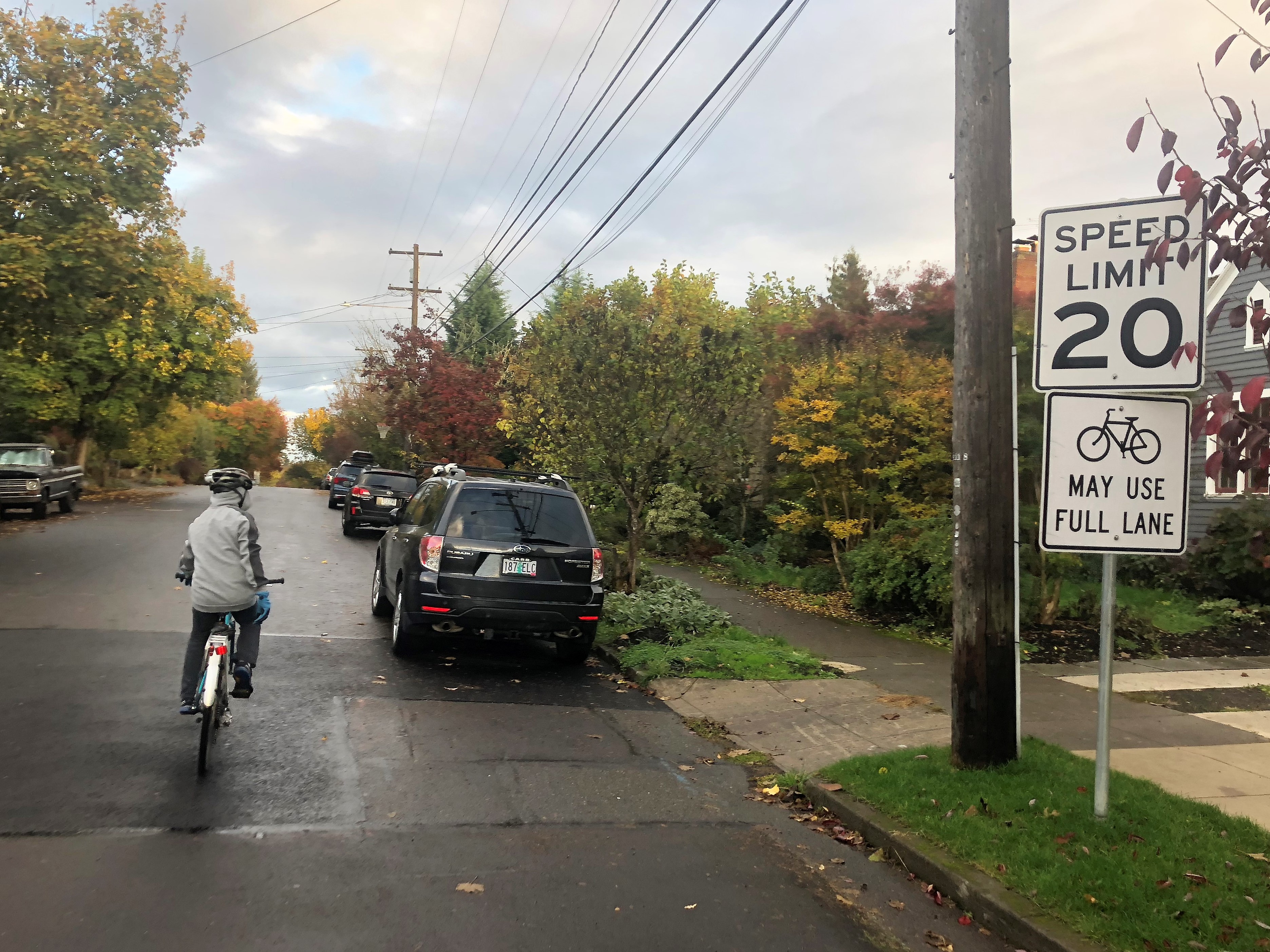
(Photos: Madi Carlson)
Last week I wrote a “rah rah” post about making a plan to pedal more and beat the winter blahs. That post inspired a few comments about readers’ plans for winter biking; but there was one commenter who felt I, “Missed a huge opportunity to point out that riding at night or even in a light rain increases one’s chances dramatically of death and maiming.”
So this week I figured I should write about safety. Or rather, why I don’t write about safety.
Why do my posts not focus on safety?
First; bicycling is very safe. And second; because my one true desire is to get people out of cars and onto bikes and my greatest tool for doing that is demonstrating how fun and easy family biking can be.
In my 10 years of blogging about family biking I’ve only once written a post about safety. Back then I had a seldom-used car, so I had the authority to compare driving and bicycling: “I feel less safe in the car,” I wrote, “I’m much closer to all the distracted drivers — yakking on cell phones, texting on phones pressed against steering wheels, or busily looking for parking spots.”
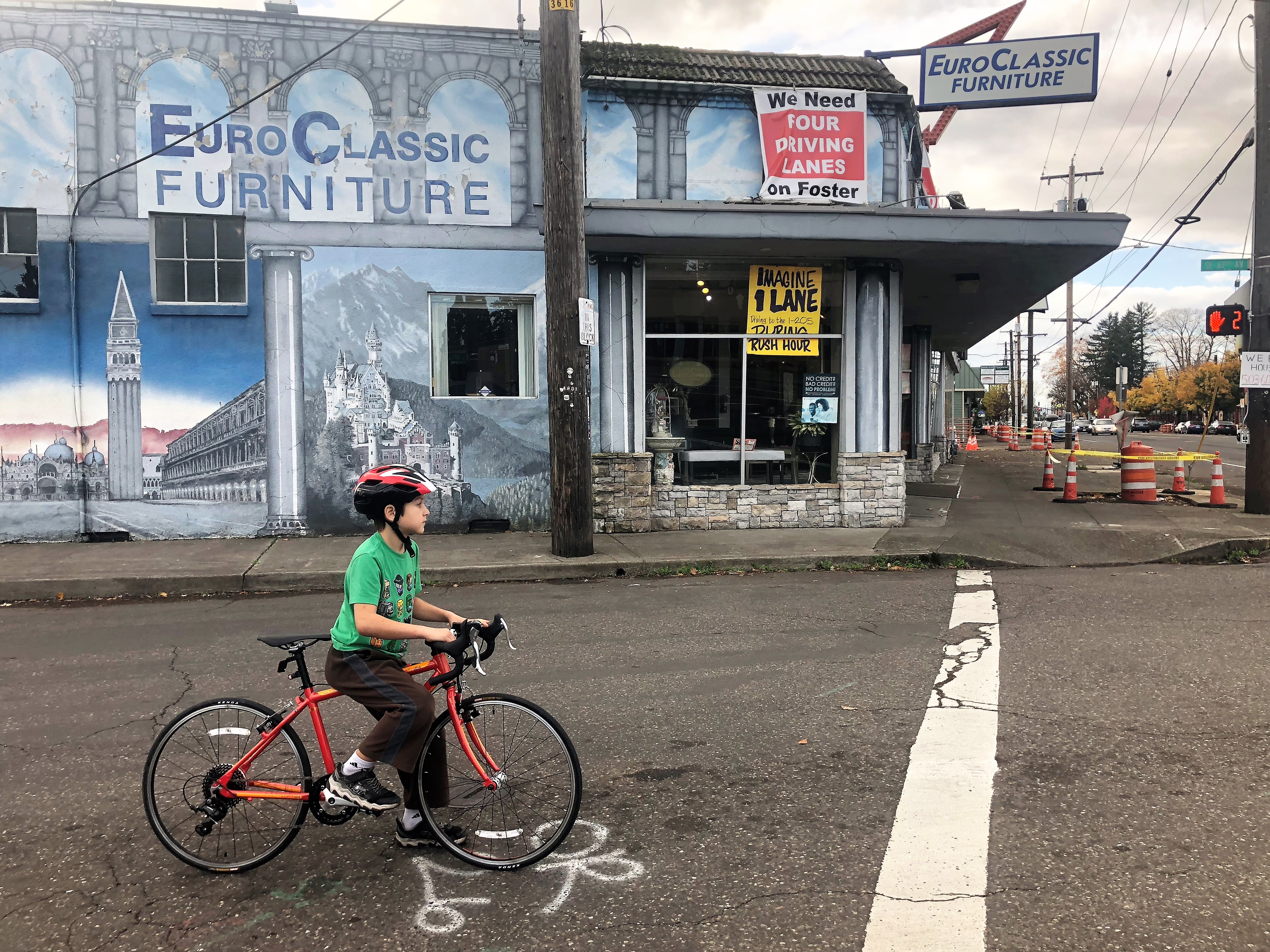
One article I’ve read that has always stuck with me is, Which really is more deadly: cycling or sitting down watching TV?.
Advertisement
Here’s more from my old post that still rings true to me today:
As a family biker I have to say I feel even safer than the statistics. It’s not due to a sense of responsibility for my passengers, though that probably adds an innate level of cautiousness I’m unaware of. I contend it’s simply about size, speed, and posture. My bike is BIG and therefore easy to spot. But even more helpful is that I’m very slow — people driving (and people walking, and other people on bikes) have tons of time to notice me. In fact, in uphill door-zone bike lanes I’m slow enough to peer in the window of each parked car as I approach to see if I have to worry about an inhabitant opening a door into my path. That’s a luxury many bicyclists don’t have. While I’m not bolt upright like on a Dutch bike, my cargo bike (and my city bike before it) is fairly upright so I’m tall and can look around much more easily than on a bike with drop bars. It’s remarkable how different things feel on my road bike — I’m small and superfast and feel somewhat at the mercy of my surroundings.
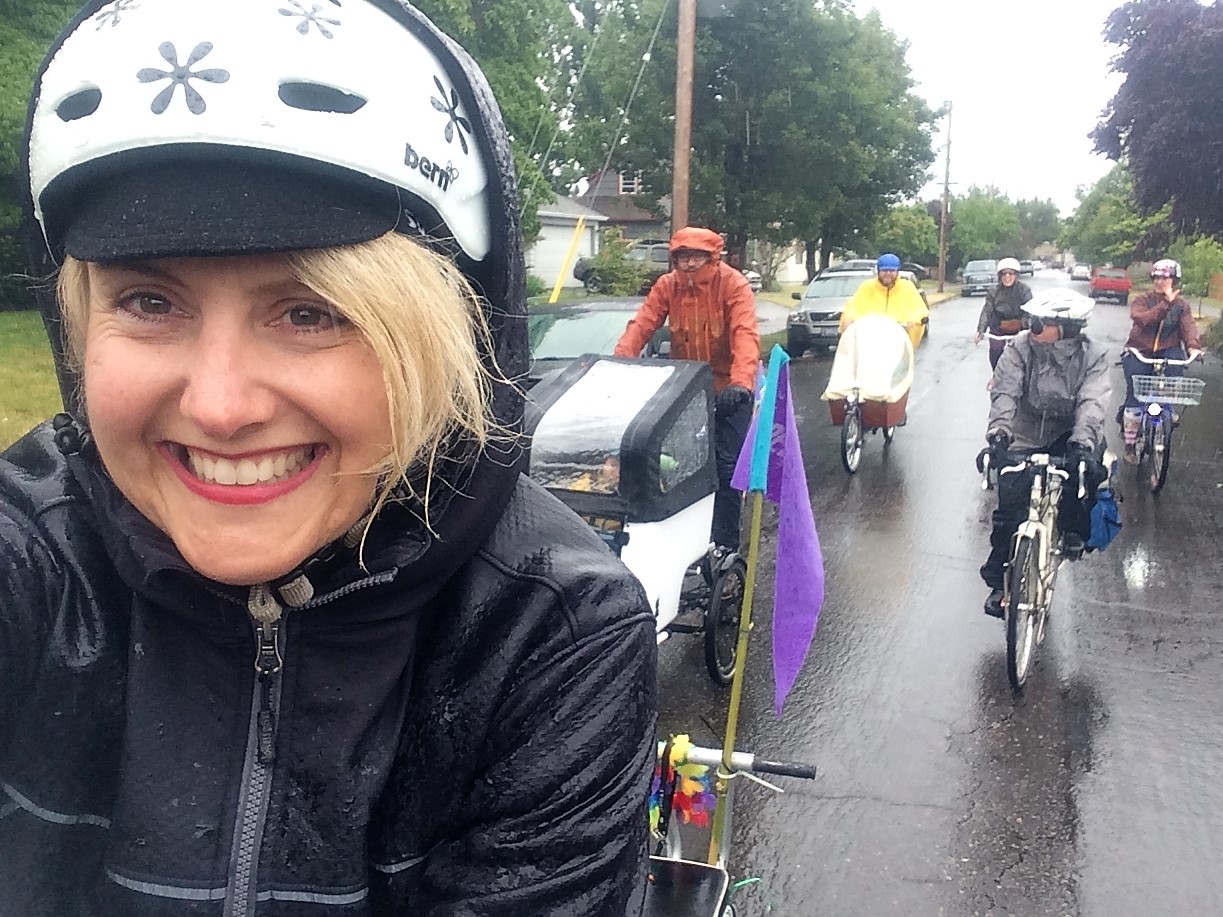
If you’ve ever been on one of my group rides (such as Kidical Mass PDX), you will have heard a brief safety talk at the beginning. I go over any hazards we might face. My kids hear safety reminders incessantly. So perhaps I’m a bit disingenuous because how I ride in practice is not how I write about riding. I used to worry about misleading people, not in terms of safety but in sugarcoating the realities of biking with kids. For instance, I don’t share all the hardships of cold fingers, wet shoes, and the occasional whining and tantrums (granted, I’m the one doing most of the whining and tantrumming). Instead I choose to focus on the fun stuff.
Since we’re all in this together, I’m curious what you think. Would you like to hear more about safety as it pertains to family biking and/or biking in general in this column? Please let me know. Thanks for reading.
Remember, we’re always looking for people to profile. Get in touch if it sounds like fun to you. I’d especially like to feature families of color so please get in touch or ask friends of color who bike with their kids if they’re interested in sharing their stories. And as always, feel free ask questions in the comments below or email me your story ideas and insights at madidotcom [at] gmail [dot] com.
— Madi Carlson, @familyride on Instagram and Twitter
Browse past Family Biking posts here.
Never miss a story. Sign-up for the daily BP Headlines email.
BikePortland needs your support.



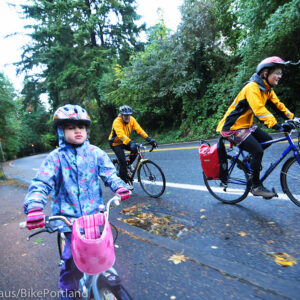
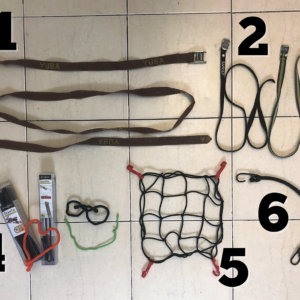
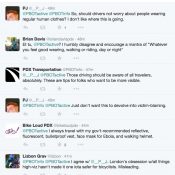

Thanks for reading.
BikePortland has served this community with independent community journalism since 2005. We rely on subscriptions from readers like you to survive. Your financial support is vital in keeping this valuable resource alive and well.
Please subscribe today to strengthen and expand our work.
Good on you, John! I’ll be honest, for a number of reasons I’ve been struggling to commute at the same rate this school year. I need to find some spark to reinvigorate my commuting desire and stop taking the easy way out. Maybe reading comments such as yours and hearing from others will help.
You’re right about the blinders people wear when they drive a car. By the numbers you’re far more likely to be injured in a motor vehicle than you are riding a bicycle. Is that a statistical overrepresentation? Probably. But stating flippantly that you’re going to be maimed if you ride your bike in a light mist is little more than the triad of fear, uncertainty and doubt rearing its head.
I’d love to see some stats and/or facts supporting the “more likely to be injured in the dark and rain” hypothesis. Until then, I’ll see you out there with those same cold fingers and wet feet!
Same here!
I very much agree that emphasizing “safety” when it comes to utilitarian cycling feeds into negative stereotypes about cycling that are simply not based on evidence (and especially so in Portland). In fact, safety-oriented advocacy (e.g. helmet and visibility campaigns) may very well have a negative effect on cycling safety because they depress mode share.
While I agree, as an advocate I have also learned how powerful an argument safety can be. Nobody will be openly against “safety.” Rebranding “cycletracks” or “physically separated bike lanes” as “protected bike lanes” was a great marketing move, but it also may leave people with the impression that cycling outside of those protected lanes is unsafe. I find navigating that tension tricky.
Dear Madi,
I would love you to keep NOT writing too much about safety. Am a mum of a 2-year-old who is driven around in a cargo bike. My boyfriend and me love bikes, possess no car, wear helmets rarely in smaller cities around Berlin, Germany. Am becoming a doctor in internal medicine and the aim is to get more people moving easily now!
Love what you do & share!
a.#
Thank you!
Yes. The best proven way to improve safety is more cycling. You don’t get there by making it frightening. If everyone realizes how fun, convenient, and friendly it is to ride your bike, then the safety will improve itself.
I’d say we should NEVER talk about safety in a way that makes cycling appear to be less safe than driving or walking, especially since it isn’t. I come to that conclusion after seeing Davis hire a new cycling coordinator who went all-in for safety/danger stuff and promptly see its cycling modal share drop by 30%. Closer to home, Eugene has done the same thing, in part to sell its cycletrack and “protected” and buffered bike lane plans/builds. The result has been a 60% modal share decline that, if it continues (it won’t because of e-bikes) will see zero bikes on Eugene’s roads by the end of 2024.
Eugene also does intense safety-oriented encouragement in its SmarTrips programming, which leads to noticeable declines in ridership in the neighborhoods where it has been done according to the ACS numbers.
Enough of danger! danger! cycling “advocacy”. It’s starting to create danger by getting rid of our “safety in numbers” advantage.
Preach it, sister!
I don’t come here to get “safety” advice and I understand the basic statistics that biking isn’t any less “safe” than driving–so please don’t make this column about safety. The different perceptions of car vs. bike safety are interesting though. A car comes equipped with all standard safety features, whereas most things are an add-on for bikes. If you wanna ride, go grab your helmet, your reflective clothing, your lights, your winter tires, etc. Add five minutes on each end of your ride to don and doff this equipment, and always take your lights on and off your bikes to avoid theft, which quickly becomes a serious PITA. I think this “add-on” mentality may fuel different perceptions about safety for bikes and cars, since it seems automatic to use safety equipment in cars like seat belts and lights, and becomes more of a personal responsibility to stay “safe” on a bike. (And I know some here will argue with me about whether these items are necessary for safety.) I don’t know that there is an easy work-around to this differential, other than awareness. I thought dynamo lights would be my workaround, but mine just aren’t as great as I wanted them to be–see below…
As a personal take on it, I just last week commented here on my desire to keep riding through the winter, and scoffed a bit at the comment about the dangers of riding in the dark and the rain. But I was unprepared on Monday night for how different my ride home felt in the actual pitch dark, thanks to the time change. I thought I had enough gear and lights to make it manageable, but it was honestly a harrowing commute and felt much less safe because of the decreased visibility: my own, and others’ visibility of me. It felt like riding in a bubble where I couldn’t easily see what was happening a block ahead, or catch things with my peripheral vision, and my vision was constantly adjusting (or failing to adjust) back and forth between bright lights in my face and dark shadows under trees. I know that the “right” answer here is always just to buy more stuff–more, brighter lights, more yellow clothing, etc. That might help (though frankly inconvenient to pay for or find, then to put on and off all the time), but it is just a fundamentally different experience to bike at night than it is during the day regardless of any safety statistics one way or another.
So, let’s to get this straight. Advocating for visibility (both visible and auditory) for children is now taboo in Portland Bike scene? I had hoped BikePortland had gotten less echo chamber, not more.
Got it.
Hi Mark! I didn’t mean to make you feel singled out, and thank you for having given me the idea to write this post. Going forward I’ll think more about including any applicable safety information in my posts (and thanks for that idea, too!) though I still feel as I felt five years ago and 10 years ago that my strength is in encouraging people to bike for fun.
The stat that I’ve heard again and again is that the health benefits of cycling outweigh the risks by 20 to 1. I support your message, Madi!
I don’t mind chatting about safety, as I think it’s something that people “interested but concerned” about biking with their kiddos want to hear about. I like your attitude that it’s so much safer than so many other things that it doesn’t need to be fretted about. Actually, statistical sources and other research about how safe biking is was an idea I had for a section of my blog. Race you? 🙂
I appreciate that. I just want kids to be safe as possible. If consenting adults want to ride in complete black, with no lights or a helmet, that’s fine with me as I sometimes choose to do.
I live and ride in the suburbs. When I ride I used what I call a “mixed” commute: I drive about a third of the way to a park and ride and then ride the rest of the distance to work in Hillsboro (9.5 miles). My route takes me along Murray, by Nike, and then onto Cornell for most of the way. I ride with lights: flashing during the day, and steady at night. My clothing and wheels have reflective elements. I am comfortable that I have an acceptable level of visibility. However, on an almost weekly frequency I am passed by cars that drift over into the bike lane and on several occasions i have confirmed that the drivers were operating their phones. This hazard is only multiplied at night and by several orders of magnitude in the rain when wet surfaces create hundreds of points of lights via reflection.
As a family guy, and someone in the middle of my life, I am honestly losing my nerve to ride in these conditions during the winter months. Riding in full daylight during the summer can be harrowing enough.
None of this is meant to dismiss any other perspectives about the safety or “cost-benefits” of cycling in any weather. I just thought I’d share my perspective from the ‘burbs. (I seriously envy you “city cyclists” sometimes!)
Regards.